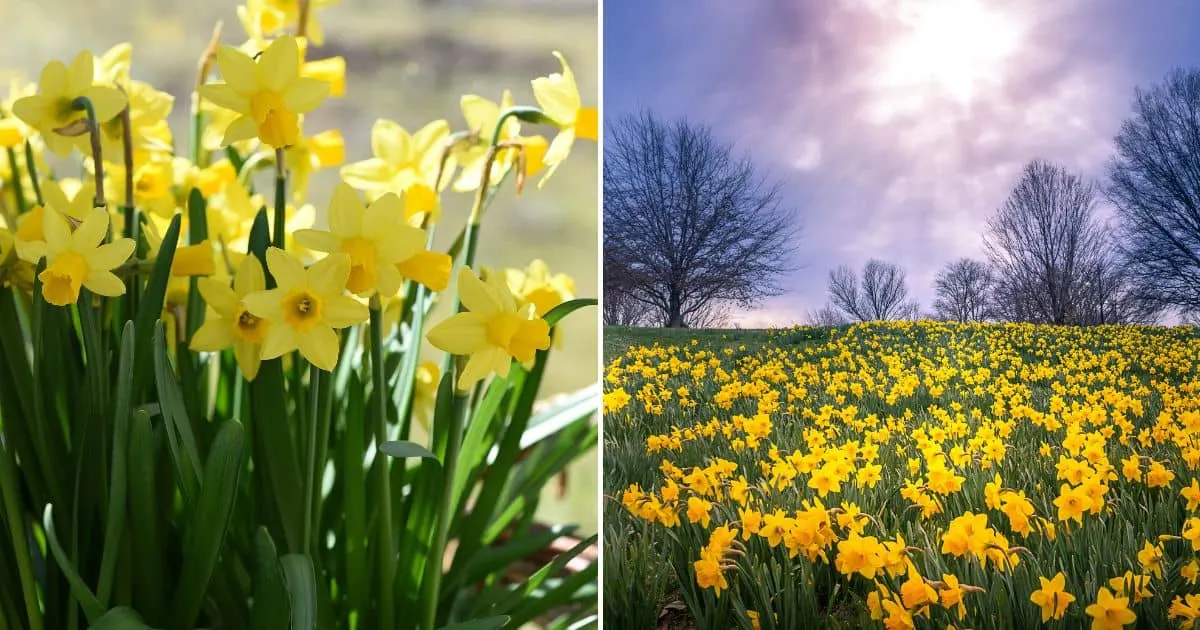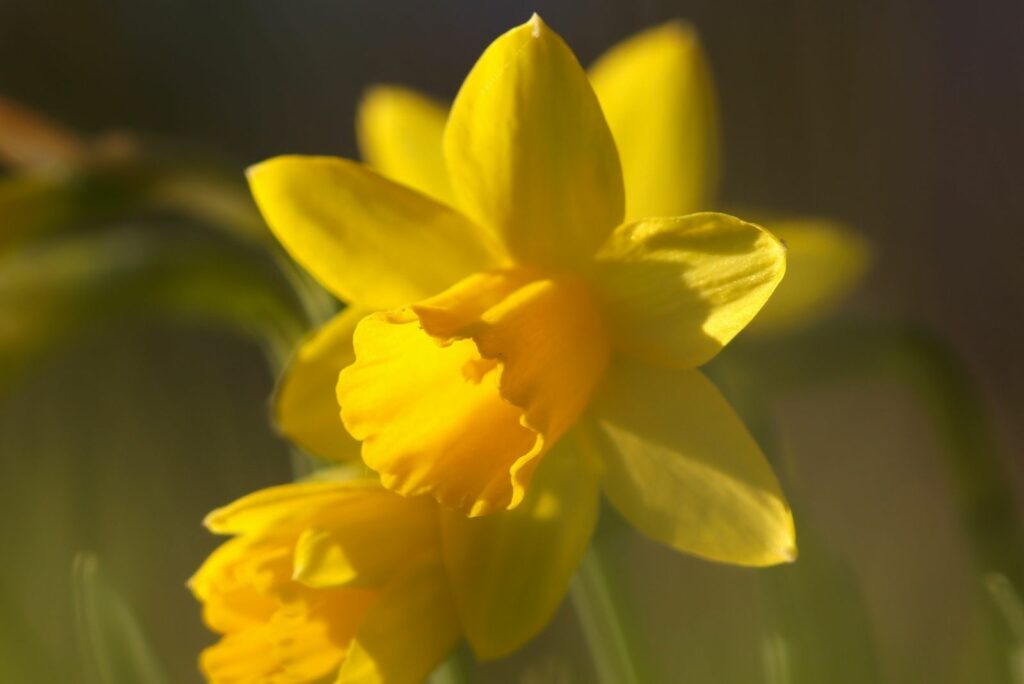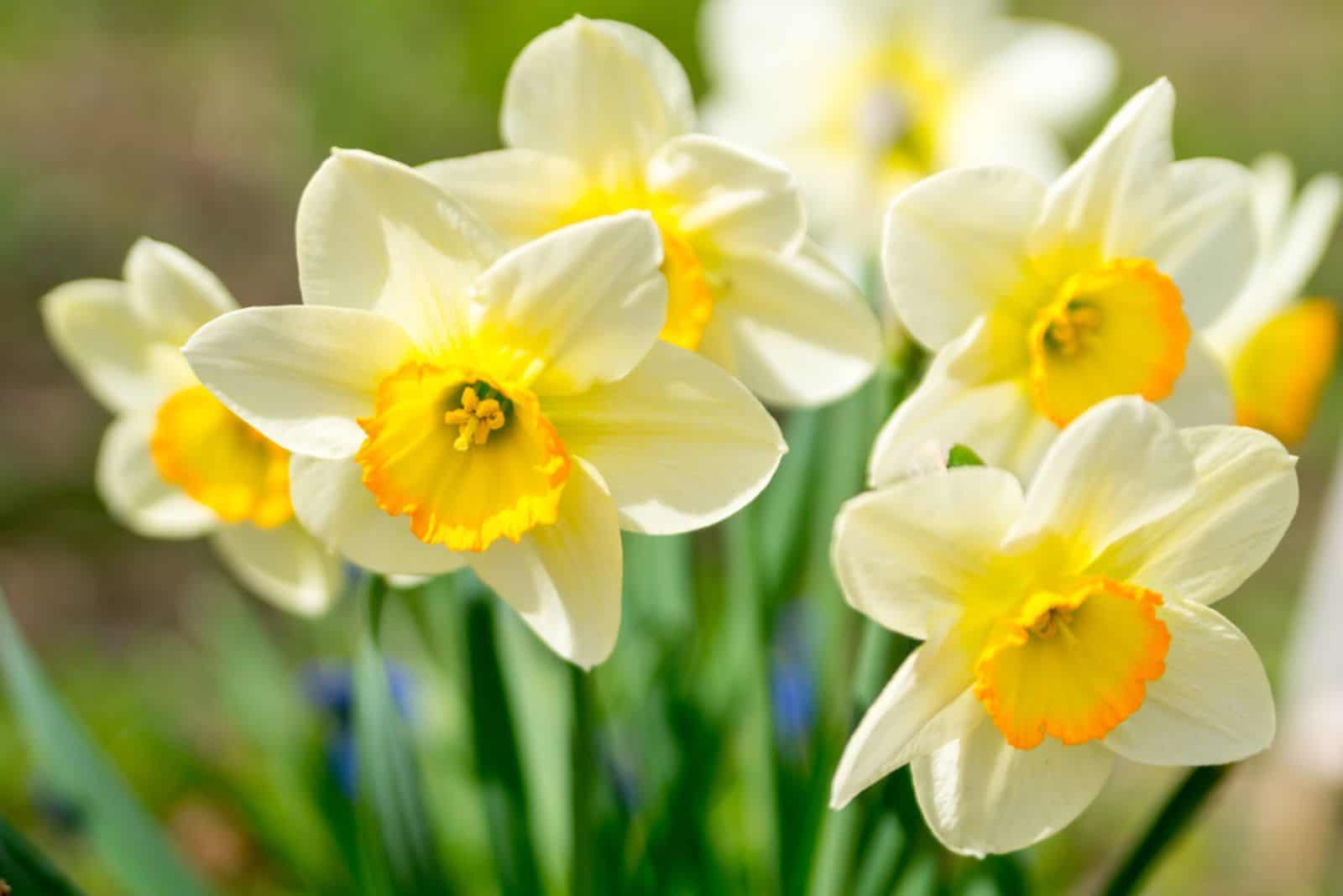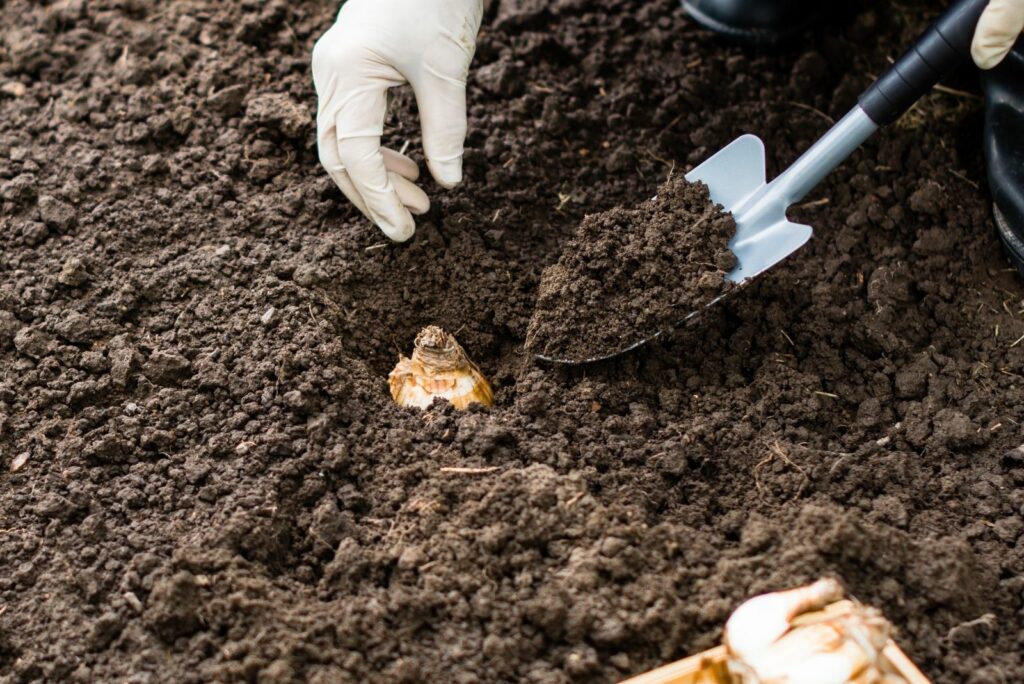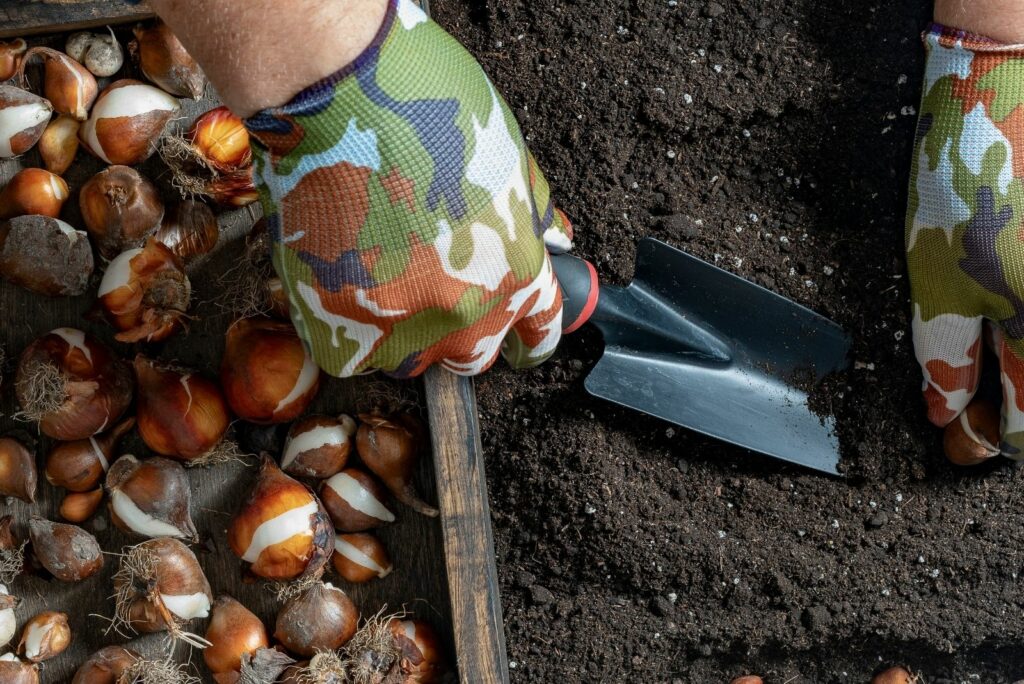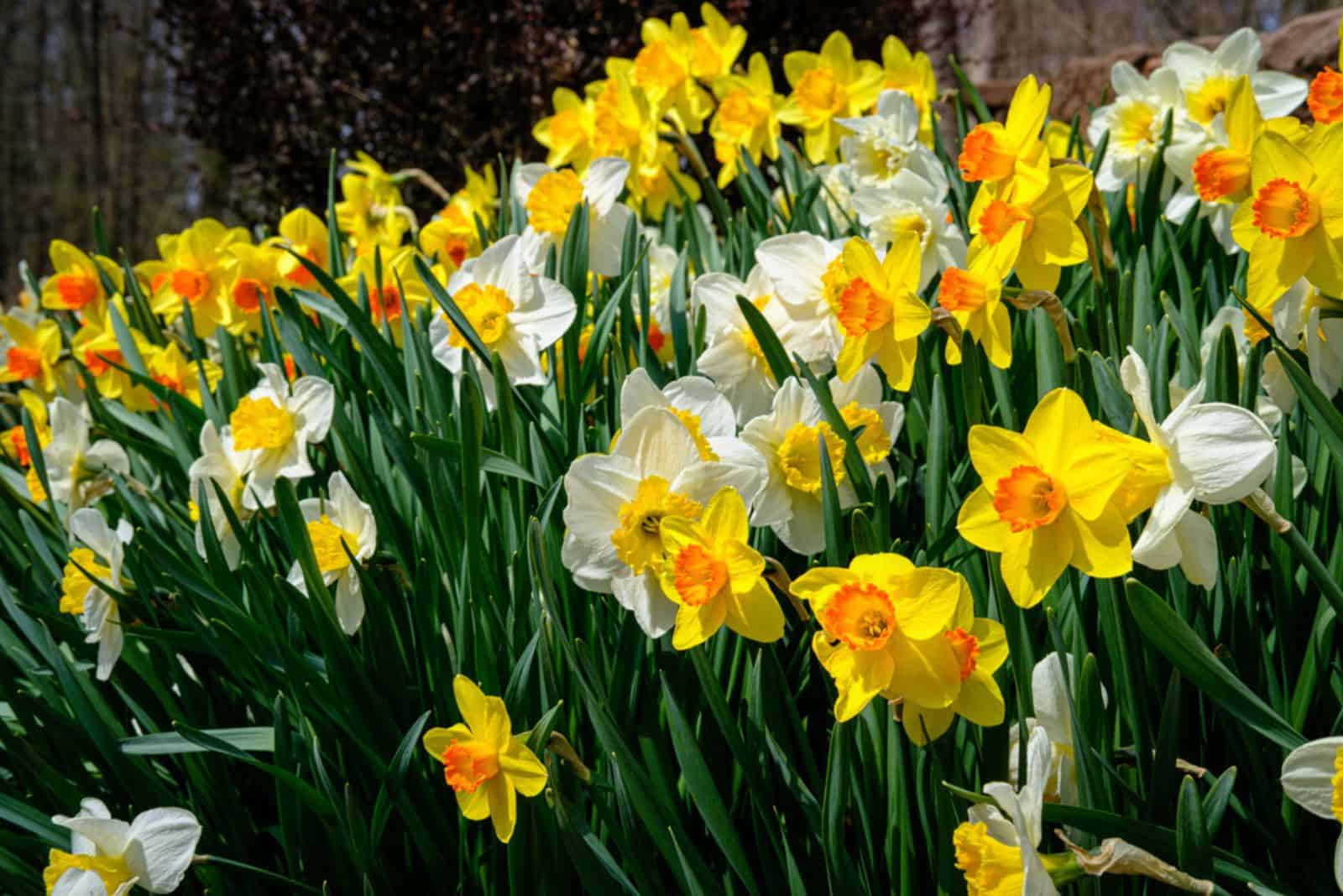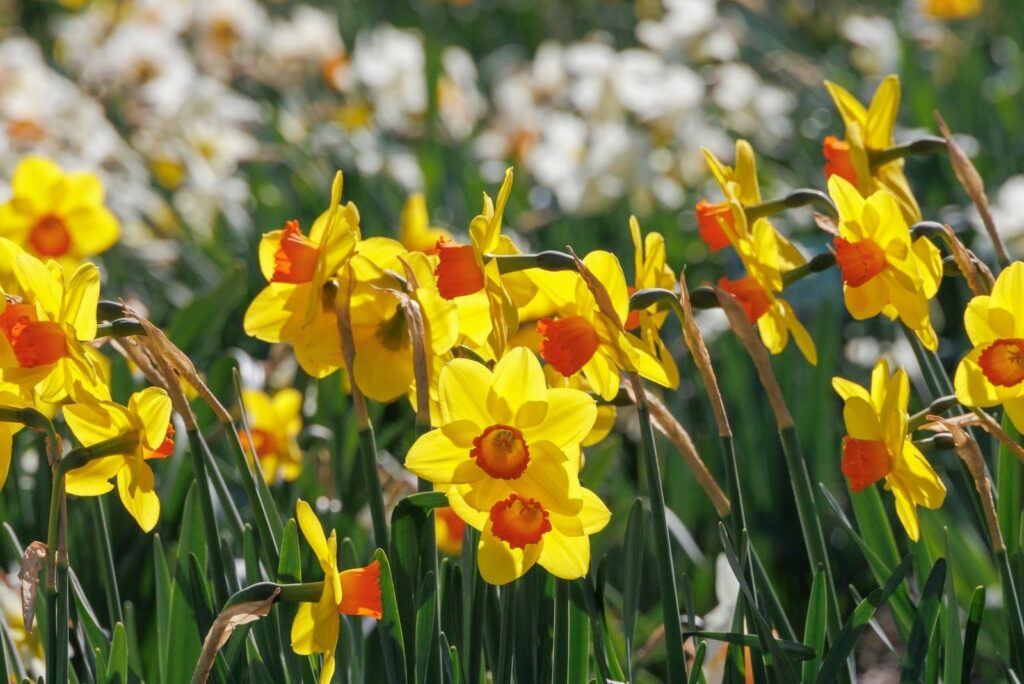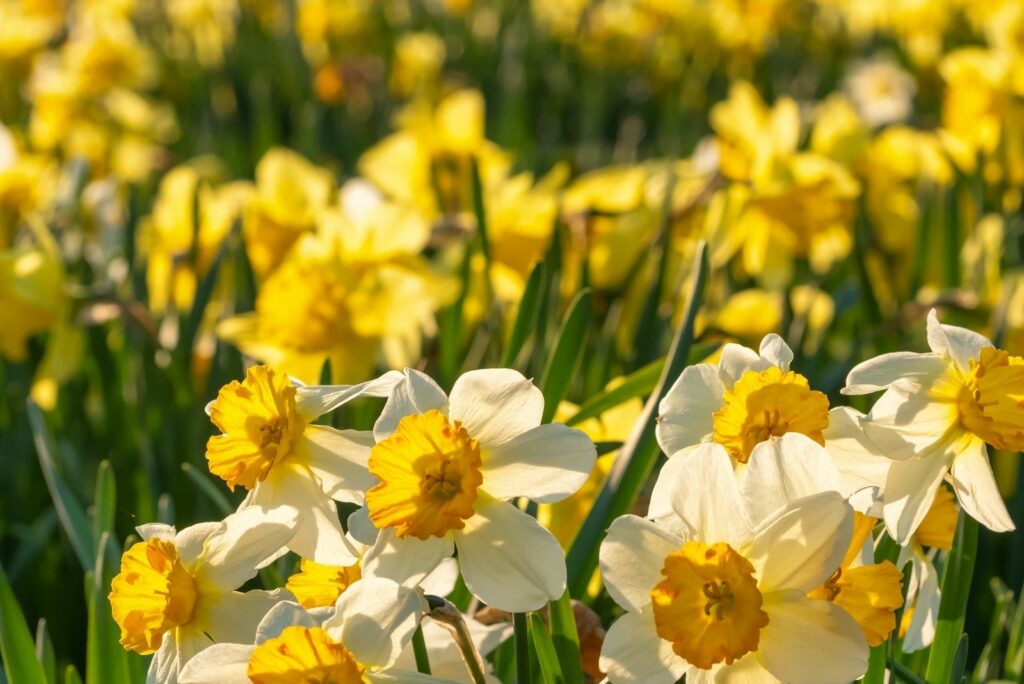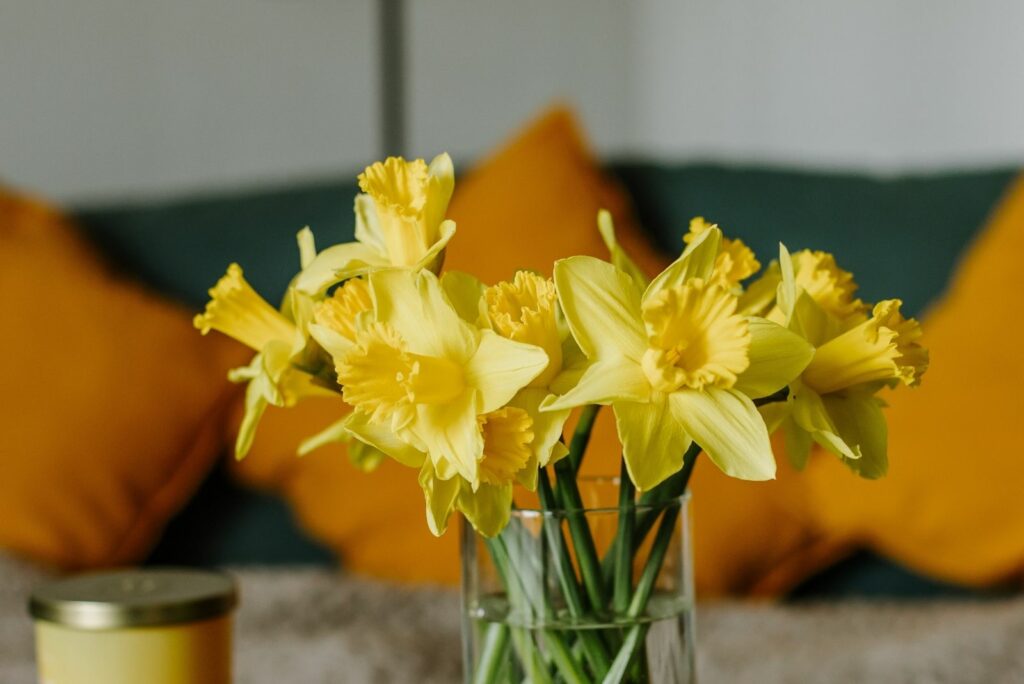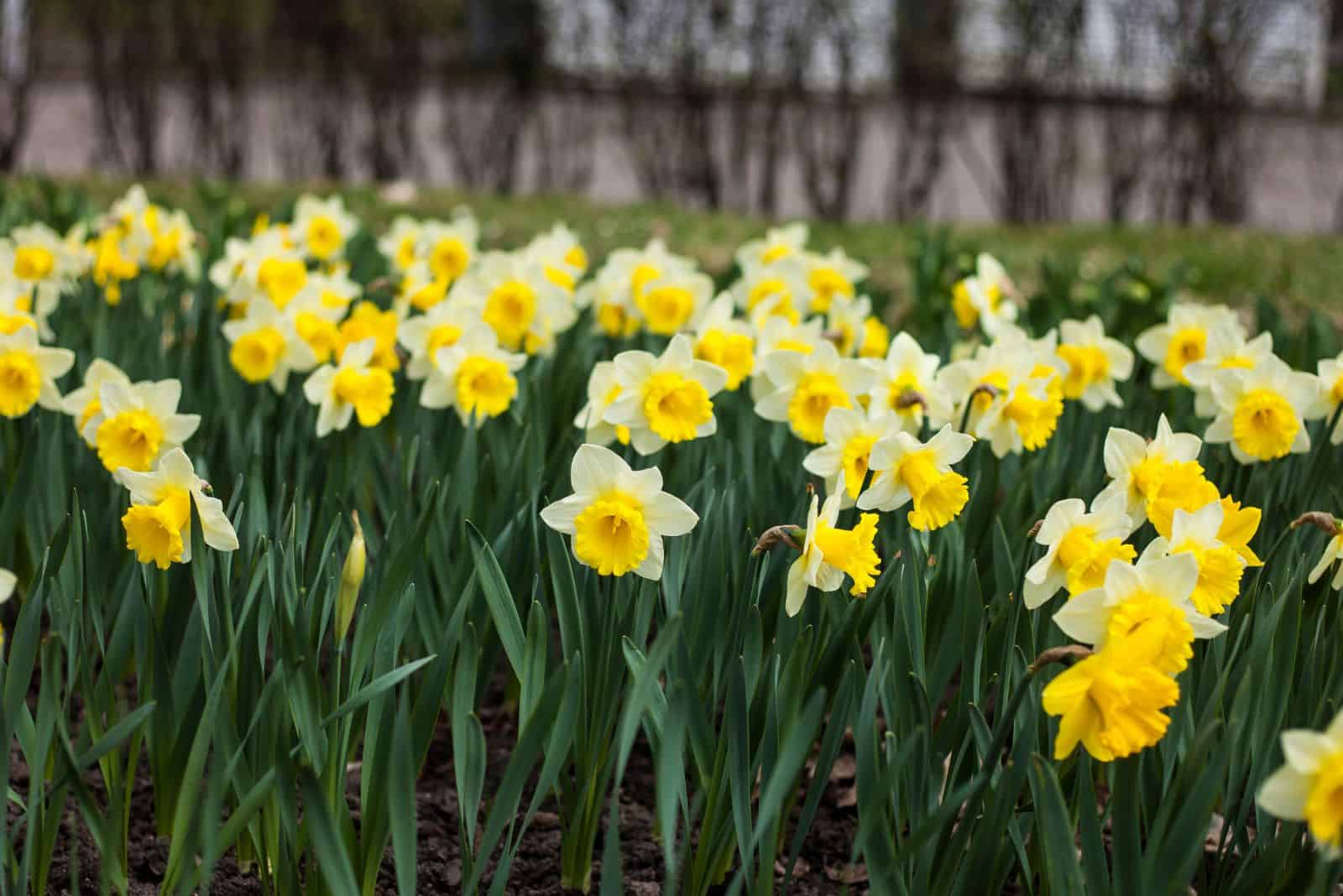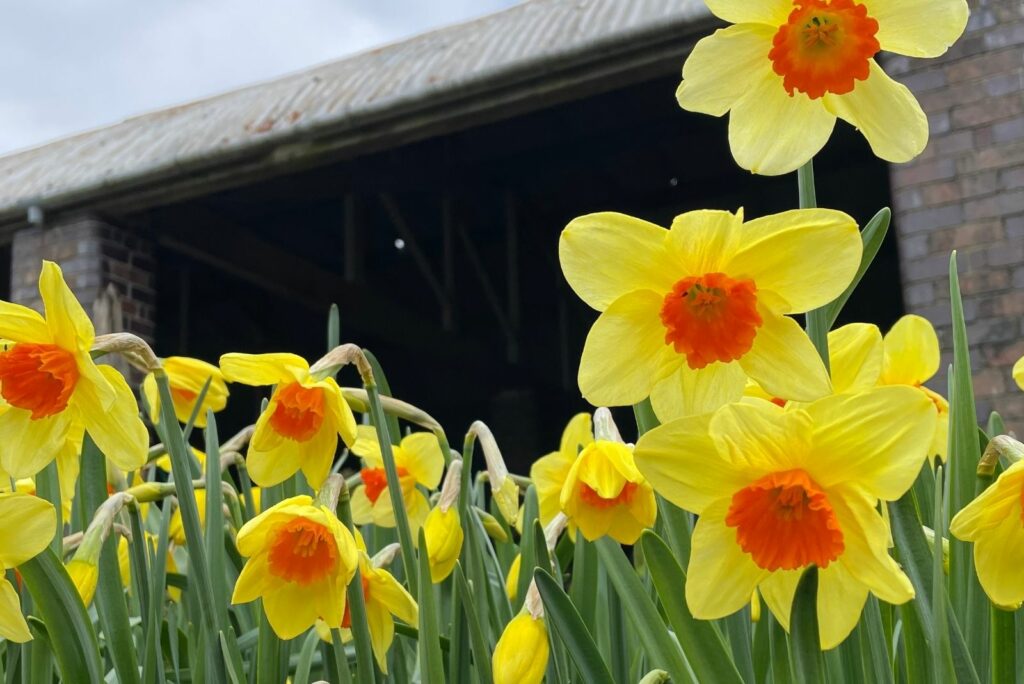With spring already in full sway, I’m sure we’ve all seen some delightful daffodils basking in the sun.
And you can easily plant your own narcissuses and enjoy the show in the comfort of your own home!
Below, you can find some helpful tips and tricks to get you started on this journey, as well as some interesting facts about daffodils that will make you appreciate them even more.
Quick Mythological And Historical Background Before We Start
Daffodils are on the list of Greek flowers and have a fascinating mythology to back it up.
It starts with a gorgeous boy who only had eyes for himself, admiring his reflection in the lake. He withered away, and as he came to an end, a daffodil sprung up in his place.
This myth backs up the modern history which claims Southern Europe and some regions of North Africa as the place of origin of this flower.
As time went on, daffodils spread throughout Europe. From there, it was quite easy for the first settlers to bring them over to North America, but they only gained in popularity after Dutch breeders took interest in them.
The good news is that daffodils aren’t that fussy. They grow from bulbs where they store carbohydrates, which help them overwinter and come back stronger than ever.
These bulbiferous geophytes are much harder to pronounce than grow! Although, daffodils aren’t the only ones that belong to this category; tulips and amaryllises are also proud members.
It amazes me how little I knew about these common flowers. Some of these facts will surprise you, while the others will keep your daffodils blooming for years to come.
Let’s dive right in!
1. Skip The Fertilizer
This fact baffled me, but daffodils don’t really need fertilizer. They’re one of the heralds of spring, and since they appear early in the season, they don’t have to battle other flowers for nutrients.
In winter, microorganisms are still active and they decompose organic matter. (1) This increases soil fertility and allows your daffodils to grow perfectly fine without any fertilizers.
But if in doubt, you can always test your soil and see whether it contains all the nutrients necessary for your narcissuses. If you don’t notice any blind daffodils, there’s no reason to fertilize.
2. Blind Daffodils Are A Thing
No flower can actually see, but when we say that a daffodil is “blind,” we refer to a cluster of healthy, deep green leaves but no buds growing.
Why do they turn out this way?
If it’s their first year after planting, it’s likely that you planted them at the wrong time or that you didn’t bury the bulbs deep enough.
If you haven’t planted them yet, do it in September and bury them about 4-6 inches deep or twice the bulb’s depth. But if this already happened to you, give it another year. The plant will adjust its flowering cycle and get to the right depth.
If your older daffodils emerge blind, the usual causes include a lack of nutrients or pruning their foliage too early.
Add some compost or bone meal to your bulbs and cut the foliage only when they start to turn yellow and die back.
Finally, pesky pests or annoying diseases may also cause your daffodils to emerge blind.
In this case, you’ll have to discard the infected bulbs and replace them with healthy ones.
3. They Have Soil Crawling Abilities
Planting bulbs is slightly more complicated than sowing seeds as you can’t just sprinkle them around and hope for the best.
Instead, you have to plant them in the correct direction for the daffodils or other bulbous flowers to grow.
However, sometimes it’s downright impossible to decide which side is the top or bottom. When in doubt, plant the daffodil bulbs sideways!
These plants grow contractile roots which allow them to adjust their position in the soil.
You heard that right! Daffodils can move around the growing medium. Their contractile roots will pull or push against the substrate and move the bulb upwards or downwards if the depth isn’t right.
If you plant the bulb sideways, they’ll straighten up the right way all by themselves!
4. Let The Leaves Alone After Blooming
Once spring is over and all notion of daffodil flowers has faded, you may feel tempted to get rid of their green growth as well. However, you shouldn’t do this as they have a specific purpose.
These leaves photosynthesize and ensure your plant has enough food and energy to survive the winter in the form of bulbs.
The practice I implement is deadheading the spent flowers as they start fading. I leave the foliage alone for the next 4-6 weeks or until I notice that they’re yellowing and dying on their own.
And if you’ve created a daffodil bed on your lawn, mark the leaves with stones, flags, ribbons, or anything of the sort so that you don’t mow them together with the grass.
5. They’re Not Much Use To Pollinators
Believe it or not, daffodils aren’t a favorite of pollinators. Yes, they do appear among the first flowers in spring, but bees and hummingbirds tend to avoid them unless there’s nothing else on the menu.
That’s because many of the bulbs we get in stores are actually hybrids with little to no pollen, which makes them useless to pollinators.
Luckily, there are still non-hybridized daffodils you can add to your garden, and their vibrant colors and tubular flowers will attract bees and butterflies like crazy.
6. Daffodils Are Toxic
According to S. Mekonnen, all parts of the daffodil are toxic to humans and pets, and the most poisonous part is the bulb. It contains lycorin, a toxin which causes nausea, vomiting, diarrhea, and stomach pain if ingested. (2)
The same specialist reported high blood pressure, liver damage, and dizziness, but only in animals, not humans.
That’s not all! Daffodils also contain calcium oxalates, which can cause skin irritations, a burning sensation in and around the mouth, excessive drooling, and more.
That’s why you should keep your narcissus beds somewhere your kids and pets don’t play. However, most animals know that these plants aren’t to be messed with, so they’ll avoid them.
You might even want to try planting them near your vegetable gardens to keep the wildlife at bay.
7. They Cause Other Cut Flowers To Fade
If you want an adorable display of cut flowers, but don’t know which ones to use, get some daffodils! They’ll bring sunshine to your home just like that.
However, you must bear in mind that daffodils don’t mix well with other cut flowers. They release poisonous sap through the cut, which causes all other plants sharing the same water to fade.
This sap has similar ingredients as latex (toxic alkaloids), which makes it bad for its other vase companions.
If you simply must include daffodils in your arrangement, first place them in a separate vase for at least a day. During this time, most of the latex will contaminate that water.
All you have to do now is transfer the daffodils to a clean vase, add other cut flowers, and enjoy the view!
8. Let Daffodils Naturalize
Even though they’re not native to North America, daffodils can naturalize if you let them. Sure, your lawn won’t remain pure, but bright dots here and there might even elevate your landscape design.
Plant them near your fence and let them spread naturally.
If this is something you want to try out, choose non-hybridized species. They’ll attract pollinators and last you a lifetime. If you can’t find those, look for varieties listed as suitable for naturalizing.
9. They’re Beginner Friendly
One of my favorite things about daffodils is that they’re beginner friendly. If you want to grow some spring-flowering bulbs, try these out.
They require no fertilizer, endure terrible winters, and practically take care of themselves. That means you won’t have to dig them up and separate them every couple of years.
You can also plant them in full sun or partial shade – although, they’ll flower more in sunnier locations.
Daffodils can tolerate all sorts of soils, and you can forget about pest and critter infestations. Insects rarely attack that early in the season, and the plant’s toxicity keeps other wildlife at bay.
Now tell me, doesn’t all this motivate you to get some daffodil bulbs?
I hope so!
References:
1. Drotz, S. H., Sparrman, T., Nilsson, M. B., Schleucher, J., & Öquist, M. G. (2010). Both Catabolic and Anabolic Heterotrophic Microbial Activity Proceed in Frozen Soils. PNAS.
2. Mekonnen, S. (n.d.). Daffodils – Beautiful but Potentially Toxic. Poison Control, National Capital Poison Center.

